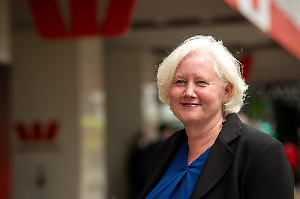
Although about $2.2 billion will flow back into mortgage holders’ pockets over the next six to 12 months from falling interest rates a big chunk of it will go on paying bills.
BNZ chief economist Mike Jones in his latest Eco Pulse publication says most of the positive cash flow is yet to filter through.
He gives the example of the carded one-year fixed mortgage rates now about 2.4% below the peak but the average rate being paid by borrowers (as at February) is only 0.2% below the peak. “Our estimates have this average paid rate falling to around 5.6% in six months’ time, as borrowers re-fix onto lower rates.”
That’s a cash flow of roughly $2.2b going back into mortgage-holders’ pockets.
Jones says it should at least steady the unsteady recovery in retail spending seen since August, but elevated costs and a still-weak labour market will keep working in the other direction.
“Despite these supports, we remain of the view the fledgling economic recovery is going to need a little more help. And, as the finance minister made clear again, there’s not a lot of room for additional fiscal support. So, it’s going to be the Reserve Bank and interest rates doing the work in the first instance.”
Uncertainty naturally increases the range of potential outcomes for interest rates. Hence the wider dispersion and more frequent changes to some of the interest rate forecasts out in the market, Jones says.
On the BNZ’s reckoning, our central view still treads a path somewhere through the middle of the many risks shrouding the outlook.
The guts of that view being:
- Three further 25bps cuts in the OCR, taking it to a low point of 2.75% by August. Market pricing has moved such that it largely enshrines this view, meaning market interest rates could rise in the event additional cuts are not delivered. We doubt the RBNZ would view that as desirable at this point.
- Should these cuts transpire, short-term mortgage rates have a little further to fall. The bank’s best guess is still that six-month and one-year fixed mortgage rates dip into a 4.7-5% range over the remainder of the year. There is less downside on longer-terms of two-years plus, with the bulk of the downtrend in those rates likely ended.
- On the basis of the above, the economics of floating, or fixing for short-terms, still looks stretched.
Some borrowers are still opting to float and pay the higher associated upfront costs on hopes term rates fall a little further in coming months.
Jones says that’s not unreasonable as there is potential for some rates to fall a little further given the risks to the outlook.
However, this potential opportunity needs to be balanced against the cost of waiting to term out debt.
For example, there’s a 1.7% difference between carded floating mortgage rates and the 4.99% two-year fixed rate1. On a hypothetical $200,000 tranche of borrowing that equates to a $283/month relative cost to float.
Expressed another way, at current rates, the two-year fixed rate needs to fall 0.07% per month for the borrower to break even on the extra cost of remaining floating.
A four month wait on floating rates would thus entail an upfront cost relative to fixing for two- years of just over $900 (assuming no change in two-year rates and making some allowance for forecast cuts in OCR/floating rates), or a required fall in the two-year rate to about 4.75% over those four months to break even.
“For some that will be a risk worth taking but we suspect many will opt to take the additional certainty and upfront cash flow benefits of longer-term fixed rates,” Jones says.
It also bears repeating that all of the above is subject to significant uncertainty given the unpredictable offshore picture, he says.
Clearly exposed
A big trade skirmish between the world’s two largest economies (43% of global GDP combined) will have a chilling impact on global economic growth.
Estimates of such are starting to surface but Jones says they should be considered works in progress given still near-daily changes in US trade policy.
“Not only do we not know where tariff rates will end up, there’s also the ‘known unknown’ of how affected countries ultimately respond (for example with fiscal policy), and how much of a cushion this and some trade diversion might provide.”
He says with things still moving the bank has resisted the urge to distil this into a precise impact on New Zealand’s economy.
But New Zealand is clearly exposed to a slowing in global growth. Just over a third of all New Zealand’s trade (goods and services imports and exports) takes place with China and the US, he says.




Comments
No comments yet.
Sign In to add your comment